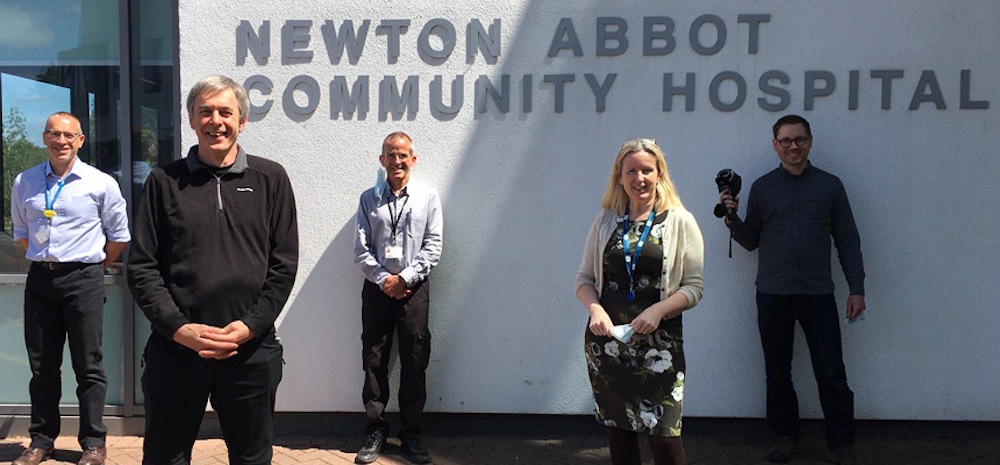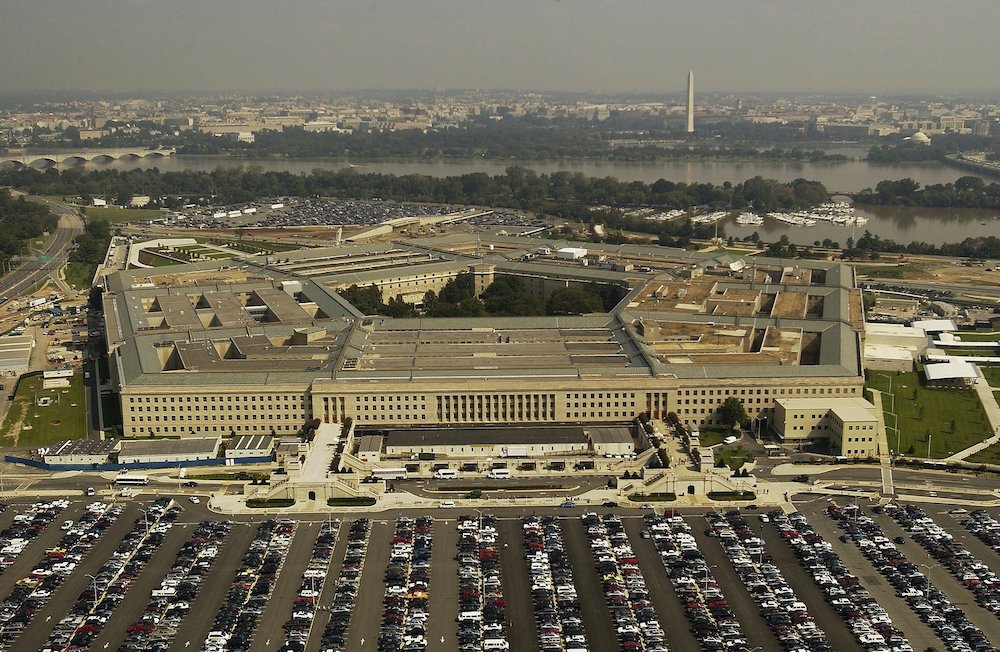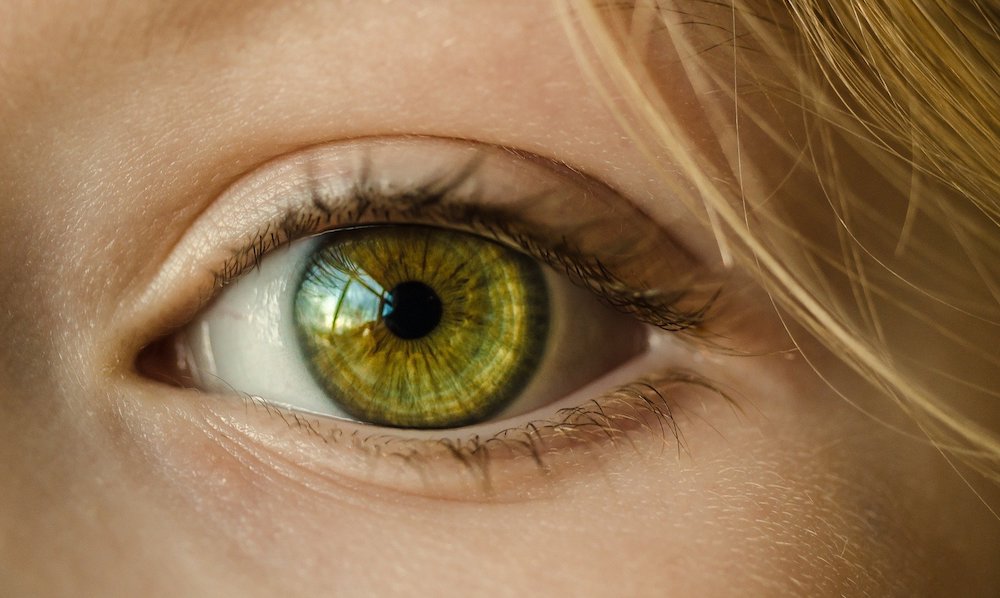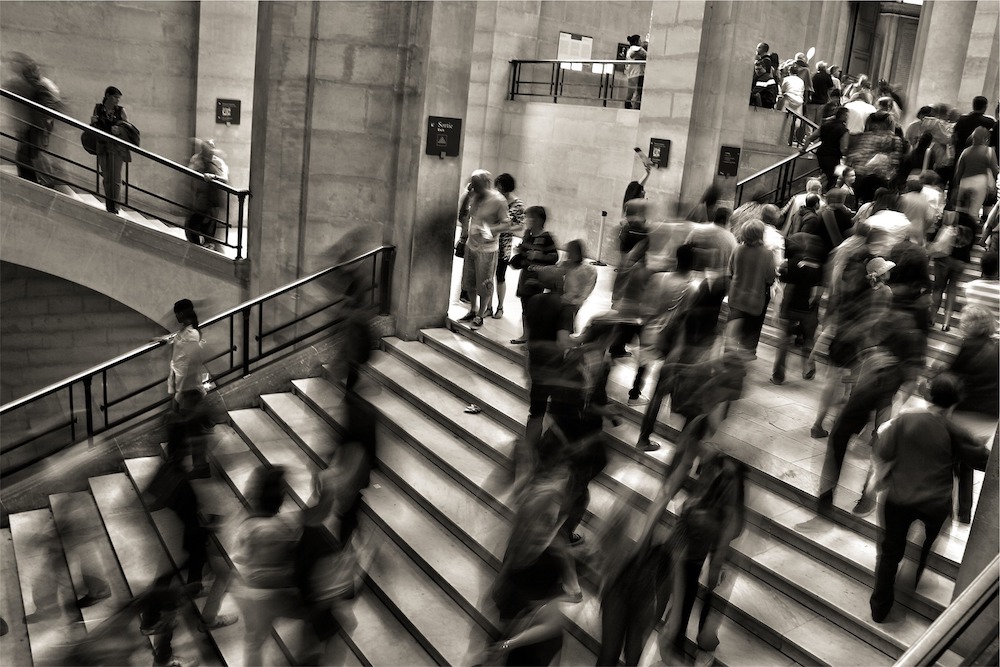
As countries begin to ease Covid-19 lockdowns, businesses are looking for ways to keep staff and customers safe from the virus as businesses emerge from restrictions. Thomas Parker looks at how thermal imaging could be used as a fever screening tool.
It’s April 2003 and hordes of tourists, business people and returning locals are streaming through arrivals at Singapore’s Changi Airport.
At the same time, the SARS outbreak is spreading across the Asian continent, and officials are concerned these new arrivals could be harbouring the deadly virus.
To mitigate this risk, the airport has installed thermal imaging scanners to help detect if people arriving from SARS-affected countries could be suffering from a fever.
Fast-forward to 2020 and people are once again turning to the technology in an attempt to limit the spread of a killer disease.
Companies involved in the transport and manufacturing industries have employed thermal imaging devices to spot anyone with a fever and, potentially, Covid-19.
However, Dr Bobby Schwartz, president of medical organisation the American Academy of Thermology (ATT), believes some are using the technology incorrectly.
He explains: “Almost everything I’ve read in the press or when looking at infrared fever screening images, people have been using it incorrectly.
“They simply don’t understand this technology or how to use it.
“For example, I’ve heard stories of somebody taking a little handheld infrared thermometer, pointing it at somebody’s forehead and saying ‘you have a fever’.
“Let’s say when you’re a kid and you were playing outside on a very cold, wet, grey day and you went to your mum to tell her you felt really hot — would she have put a thermometer on your forehead to see if you had a fever? No.
“That’s what people are doing with infrared thermometers and thinking it’s going to work, but it’s stupid.”
Instead of using infrared handheld thermometers, Dr Schwartz says people should be using thermal imaging cameras and taking their temperature readings from the tear duct area.
He explains: “This is because that area is so close to the internal portion of the body and therefore closest to someone’s body temperature.”
How has thermal imaging typically been used in the healthcare space?
Cameras capable of taking thermal images were developed by Hungarian physicist Kálmán Tihanyi in 1929 for British anti-aircraft defence following the First World War.
Since then, the tech has had a wide variety of applications, ranging from military night vision to builders testing how sustainable a property is.
In healthcare and medicine, the technology can serve four main purposes.
Its first application is to evaluate patients with neuromusculoskeletal complaints, which can range from failed neck and back surgery to migraines and thoracic outlet syndrome.

The technology can also be used to conduct breast risk health assessments and mammography checks, a practice commonly used to detect early forms of breast cancer.
Dr Schwartz adds: “There’s a third group of guidelines for veterinarian applications, as it’s pretty hard for a thoroughbred horse to tell someone whether or not they have an injury or they’re lame.
“Vets can use thermal imaging to see if there’s inflammation or changes in skin temperature for the veterinarian population.”
Finally, the technology can be used for any oral systemic problems — including dental issues and fever detection.
How is thermal imaging being used to protect hospital patients during Covid-19 crisis?
During the Covid-19 pandemic, people in the UK have been hesitant about going to hospitals.
According to NHS England, A&E admissions dropped to their lowest figure on record during April 2020.
The data shows 900,000 attendees were recorded during the month, down by 57% compared with 2.1 million in April 2019.
NHS England said the fall was “likely to be a result of the Covid-19 response”.
To encourage more people to come to hospital and make them feel safe, Torbay and South Devon NHS Trust has piloted thermal imaging scanners for both staff and patients entering its Newton Abbot hospital.
Some of the cameras have been provided by the University of Plymouth, and are typically used in researching the sustainability of buildings.
Professor Steven Goodhew, who was responsible for bringing the first thermal imaging camera to the university in 1996, says: “It’s akin to something out of Only Fools and Horses, it was a huge thing — but it’s a very sophisticated camera and it still works to this day.
“We’ve been using it for analysing the thermal properties and physics of buildings, looking at energy efficiency and how they perform.
“There are two levels of camera – high-temperature and low-temperature.
“The low-temperature cameras that tend to be pointed at buildings are similar to the sorts of cameras that can be pointed at people, because they’re both low-temperature sources.
“In basic terms, the thought was could we repurpose some cameras that we tend to use for buildings — that were sat in the university locked away — to test someone’s temperature.”
During this time, Torbay and South Devon NHS Trust’s medical director Morven Leggott was considering the technology as a means of testing the temperature of individuals.
She explains: “Pre-treatment patients already had their temperature checked, but we wanted to detect anyone entering the hospital with a temperature who might be unaware of this.

“Checking large numbers of people can create real difficulties with social distancing and we thought thermal imaging would be a solution.
“The problem is this technology is relatively untried in a healthcare setting and is expensive.
“But after an hour of considering the idea, we received an offer from the University of Plymouth to lend us its technology and help reach its potential.”
Prof Goodhew and his colleagues then set about teaching hospital staff the dos and don’ts of thermal imaging and how it can be used to “reassure” vulnerable patients attending the facility.
Anyone entering Newton Abbot Community Hospital is now welcomed by five thermal imaging cameras — four of which are owned by the University of Plymouth.
Both staff and patients are tested, with anyone found to have an elevated temperature asked about recent travel details.
How are other industries using thermal imaging to test staff?
FLIR Systems, the world’s largest commercial thermal imaging company, has developed products specifically for elevated skin temperature since the 2003 SARS outbreak.
During this time, there was interest in how to identify people with elevated body temperatures, which could be indicative of fever and tied to the virus.
Chris Bainter, a global business development director at FLIR Systems, says: “Looking at Covid-19 today, there are some similarities with SARS.
“It’s having an impact globally, and has even had a bigger impact than previous pandemics, so the need for looking for tools that can help detect those with elevated body temperatures and to play that role is significant.”
The company is currently supplying thermal imaging devices to a wide range of organisations, such as General Motors and the Pentagon’s visitor centre.
Bainter, who has found customers using the technology as a frontline screening tool to go alongside other safety aspects such as deep cleaning, says there are two waves to the implementation process.
He explains: “The first wave was looking at what’s the best way to quickly deploy and operationalise thermal technology as an effective frontline screening tool.
“This saw a lot of our customers gravitate towards our handheld products where there’s screening software on-board, they have a touchscreen and can be mounted on a tripod.
“With the screener involved, you can be operational in a matter of a day.
“What we’re seeing in the second wave is customers are starting to ask ‘how do we get the doors back open, and does this become a permanent fixture in our standard screening security protocols?’
Some of the company’s clients are looking to integrate and deploy systems as part of their existing infrastructure, while others would look to bring it in whenever it’s necessary.
As part of its human temperature detection range, FLIR has launched AI-based software that focuses on the subject’s eyes — the best place to test body temperatures.
Bainter adds: “This means that instead of having somebody positioning the camera, that camera automatically places the measurement reading in the right spot.”

Similar automated processes are being employed by Bytronic Automation, which launched its fever-detection system for Covid-19 in April.
Founded in 1997 by John Dunlop, the firm traditionally employs thermal imaging for process control and remote temperature monitoring in manufacturing facilities.
It claims its screening technology, if calibrated properly, gives a margin of error of up to three degrees.
The automated system operates by focusing on the tear ducts to get its readings.
Dunlop explains: “That’s essentially the work that we do — we take the cameras, automate the inspection of that image, and then we use that to estimate someone’s body temperature.”
The devices developed by the manufacturing specialists are initially set up to have a 38.1-degree threshold, this can, however, be adjusted.
Another business moving into the body temperature measurement space is Mitie Security, which typically uses thermal imaging in its CCTV cameras to help monitor objects in poorly lit and foggy conditions.
The company is currently providing three device types for fever detection, the cheapest being a handheld unit that takes a single shot of an individual and reads their temperature.
Christian Watts, who’s leading the outsourcing company’s thermal imaging work during Covid-19, says: “It will flash green if someone’s temperature is ok, going red if a person’s temperature is not okay.
“It might be a handheld device, it just depends again on the volume of traffic that goes through into a particular building.”
It’s also providing a temporary device, which is a conventional thermal imaging camera mounted onto a tripod or on some kind of pedestal.
Watts says: “There are different types of camera technology from a calibration and accuracy perspective, which they will choose.
“There’s also a price point as well, so if somebody is not too fussed and they want to monitor somebody quite quickly, they might go for the low-end solution.
“If a client is in a more security-critical environment, it will tend to look at the accuracy levels and is keen to make absolutely sure it knows who’s coming in and out of its building with a potential fever.
“Then there’s the odd system that can be integrated into a business’ CCTV system, although we are trying to warn away from that because firms may start to run into some GDPR issues.”
Mitie Security has had about 100 purchase inquiries over the past six or seven weeks.
Most have started to use the cameras as a pilot — which the company helps to install — to test that it’s working before agreeing on a roll-out plan.
Watts adds: “There have been one or two that have some facilities overseas, which we can’t currently help to set up.
“So we have pre-built and configured handheld devices as well as portable temporary devices to send out and for them to plug in and play with.”
Keep an eye on the eyes: How to use thermal imaging to detect whether or not an individual has a fever
During the Covid-19 pandemic, two types of thermal technologies have been put to use — infrared thermometers and infrared imaging.
Infrared thermometers work by using an infrared sensor to measure the surface temperature of someone from a distance without having to come into contact with anyone.
Basic models measure temperatures approximately three centimetres away from an individual’s forehead.
The devices do this by using a lens to focus infrared light from one object onto a thermopile detector, which absorbs infrared radiation and turns it into heat.
The more infrared energy emitted, the hotter the thermopile gets — with this heat being turned into electricity that’s sent to a detector, which is used to determine temperature.
As the device measures only the surface level temperature of an individual, there are significant accuracy concerns when it comes to measuring whether or not someone has a fever.
An array of external factors — including sitting in a hot vehicle for too long, or wearing a mask or hat — can contribute to a raised surface level temperature.
Watts says some of his clients have found external factors have played a role in the accuracy of their fever detection.
He explains; “If somebody is on the London Underground before they rock up at work, chances are they might be a bit hot and bothered, so their initial reading may well be above 37 or 38 degrees.

“Our recommendation would then be to self-isolate, sit down, and will retest you five to 10 minutes later.”
Bainter adds: “Measuring temperatures on foreheads with thermal cameras is problematic and can give false positives and negatives.
“If I’m walking outside on a sunny day, my forehead and my hair get hot, so if I’m looking at foreheads, then I might get a false positive and that creates some challenges.
“Or let’s say it’s a cool afternoon and everybody’s surface temperature on the forehead is very cool, even if someone potentially had a fever and an elevated body temperature, the forehead might be chilled.
“This might mean it could give false negatives, and that’s maybe even scarier because it’s not functioning as a tool.”
Out of the two, infrared thermal imaging is seen as a better way to test if someone has a fever.
To use this technology effectively, people should be tested one by one, with temperature measurements taken from the tear duct as it’s the closest area to the internal portion of the body.
Dr Schwarz adds: “The forehead has nothing to do with it as there’s a whole other set of calibration to do to even get a baseline.”
Body temperature changes are a good indicator as to whether or not someone has a virus as it causes a fever, which occurs when fighting infection and is part of the body’s natural defence mechanism.
By increasing the body’s temperature, a fever makes it harder for bacteria and viruses to survive.
Most thermal imaging screening devices will flag that someone has a fever if their body temperature is over average, which is between 37 and 38 degrees celsius.
Another consideration that needs to be kept in mind is the distance an individual is away from the camera.
Bainter explains: “There’s a lot of science that has gone into creating cameras that can give consistent readings and is stable over time.
“A lot of work has also gone into getting the right resolution for a camera, which means individuals are getting enough pixels on the parts they want to measure.
“If a person is a long way away and a pixel is covering a huge spatial area, the camera is giving the averaged result.
“So if people are at different distances, then the reading starts to fall off.”
Prices, data protection, and regulation: Concerns over some temperature detecting cameras
In May 2020, Bytronic Automation boss Dunlop wrote two open letters highlighting his concerns around the state of the thermal imaging marketplace.
Some of the concerns raised include how inexpensive some solutions appear to be, with “businesses selling equipment that costs only a few thousand pounds that claim to have an accuracy of 0.3 of a degree”.
He adds: “I’m not convinced that’s the case, I think they might be able to provide a calibration certificate with a lovely signature on it, but I don’t think it stands up to scrutiny.
“I’m just aware of the fact that we’ve put systems together over the years that are based on more expensive technology, and we wouldn’t really offer the same level of accuracy.”
Another area of concern raised in his letters was surrounding data protection, writing: “We should be able to feel confident that our image — arguably the most important part of our identity — is not being saved and stored unnecessarily or insecurely.”
Legal concerns around the use of thermal imaging camera is also a topic of conversation for some Mitie customers.
Watts explains: “The questions that we have had have generally been around the legality of it — such as whether or not the cameras are recording images.
“If a device is taking a picture of a face, or is reading the temperature of a particular individual, the question is what’s happening to that information?
“That’s why we’re telling our customers to use the standalone systems as all they’re doing is reading the temperature of an individual and is not recording any information, and recommending they don’t integrate it.”
When collecting its temperature results, the staff at Newton Abbot Community Hospital hand write all of the data, meaning the devices are not recording anything.

What does the post-Covid-19 future hold for thermal imaging?
During this unprecedented time, businesses are turning to an array of technologies such as thermal imaging to help protect and minimise the spread of Covid-19 while getting people back to work.
Watts believes thermal imaging equipment will continue to be adopted long after this pandemic is over.
He says: “Even though the technology is focused around helping as part of an overall solution to Covid-19, why should it not be used to detect the common cold or the common flu.
“If somebody’s carrying the flu and they don’t know they have a high temperature, why should it not in the future be part of general health and safety to make sure that other viruses don’t spread.
“I think it’ll be widely adopted going forward, not just for pandemics like we’re going through at the moment.”


